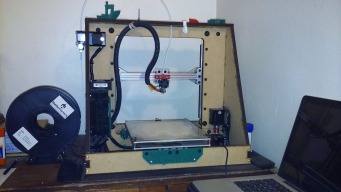QuorXZ: A String-driven, Core XZ Printer
Discussion in '3D printers' started by Scotty Orr, Aug 30, 2017.
QuorXZ: A String-driven, Core XZ Printer
Discussion in '3D printers' started by Scotty Orr, Aug 30, 2017.
The QuorXZ doesn't magically appear. It's gestation takes time, careful attention, and requires many parts. However, when it is ready, a magical, mechanical instrument is born....(and when you finally say its name, it sounds a little bit like "corks").
